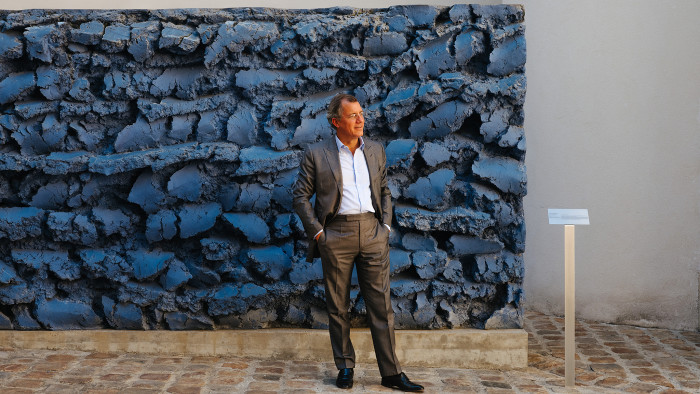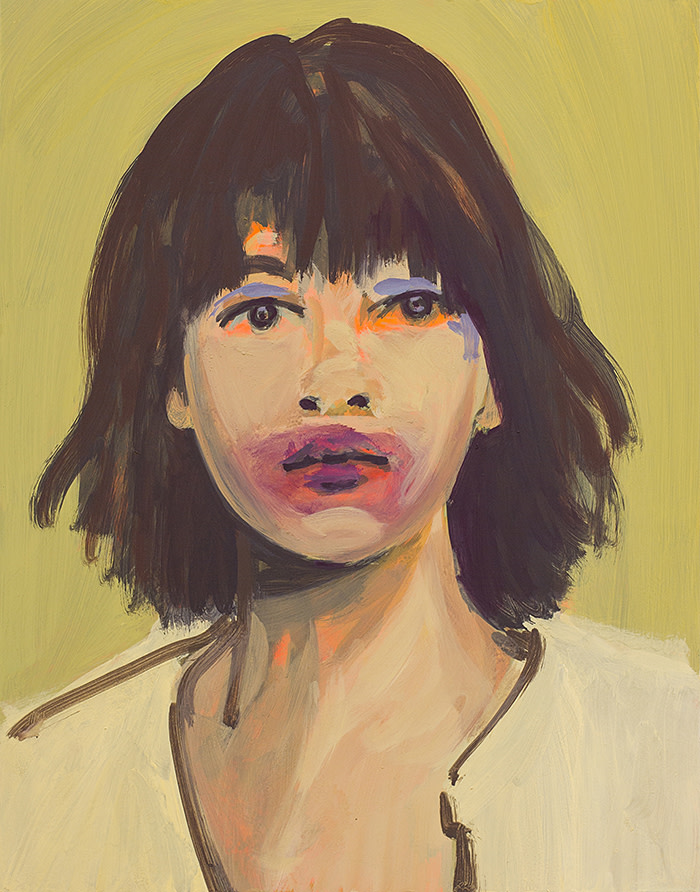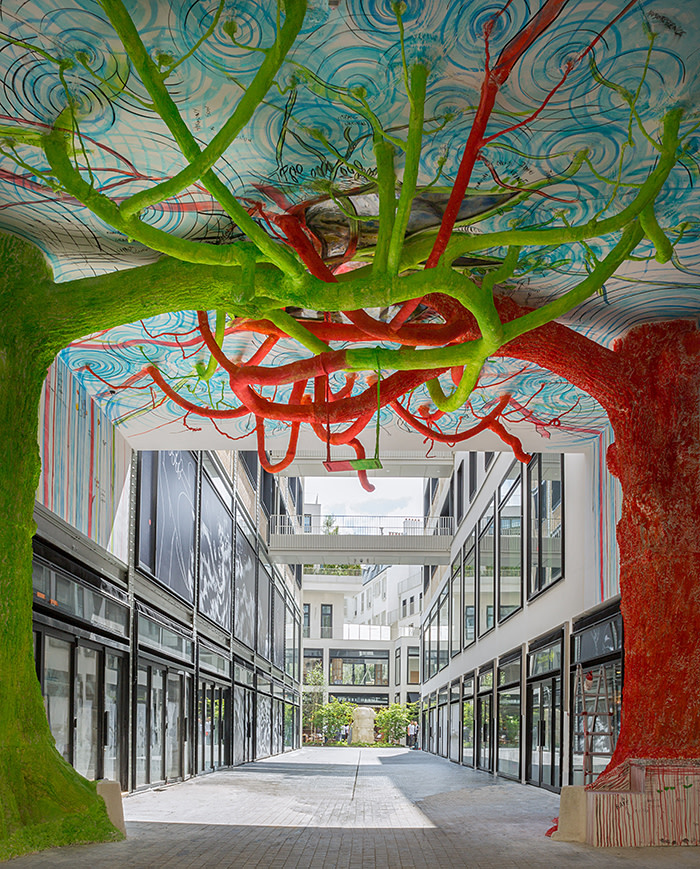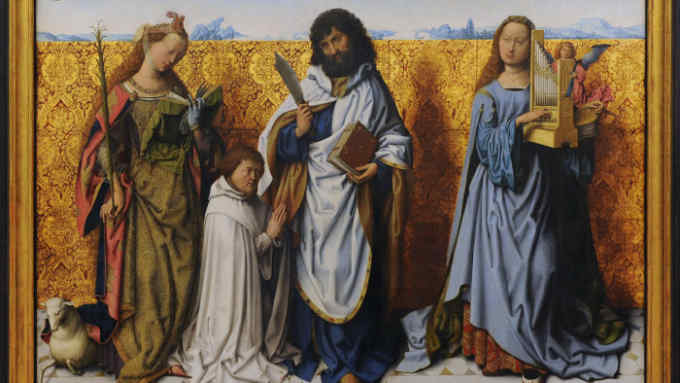Collector Laurent Dumas on his plan for a new private museum on Paris’ Ile Seguin

Roula Khalaf, Editor of the FT, selects her favourite stories in this weekly newsletter.
While mega-influencers like François Pinault and Bernard Arnault hit the headlines with their sumptuous museums, France has other collectors who are also making their mark, even if they are not such household names. Laurent Dumas is among these, with growing art holdings, a desire to support and promote French artists — and a new private museum planned for 2022.
Dumas is the founder and president of French real-estate developer Emerige. Its offices are tucked away behind a plain grey-painted door in the Marais district, close to the Centre Pompidou. While the building, the Hôtel Beaubrun, dates from the 17th century, the interior courtyard immediately gives the game away — two large, contemporary works of art are the first things that greet the visitor.
One is a giant red-and-white die propped on a rock, “The Misthrown Dice” (2017) by Gilles Barbier, while opposite stands a thickly indented blue wall, apparently in concrete but in fact in resin, by Didier Marcel, “Grand Labour bleu” (2011). Hanging in the reception is a large abstract by the French artist Neïl Beloufa (“2018-Wide”, 2017), a colourful assemblage of resin, cardboard and electric cables. Beside the door is a ceramic sculpture of a figure bearing a block by Stefan Rinck (“This Magic Box, You Carry”, 2017).
Friendly, welcoming and tanned from a recent safari in Zambia, Dumas receives me in his office, which is dominated by a huge geometrical black-and-white triptych by Gregor Hildebrandt, “Und ihr ginget selbdritt durch den Abend (P.Celan)” (2013). He recounts how he built up his business from scratch, starting almost 30 years ago. His projects — from refurbished existing buildings to new-build sites — are dotted around the Paris region and in Madrid and Barcelona, and he is thinking of extending into Ireland.
“And yet my mother brought me up saying there were two sectors I should never go into: insurance and real estate!” he laughs. “And when I did go into real estate, she was absolutely furious, and hardly spoke to me for two years!”

Since then she has had to acknowledge his success: Emerige (a combination of aime, love, and ériger, to build) has grown strongly, now numbering 200 employees; its turnover was about €400m in 2018. Dumas was awarded “entrepreneur of the year” for the Paris region in 2017 by Ernst & Young and, according to the magazine Challenges, he is now worth some €250m.
As important to Dumas as his business is his engagement with art, and particularly his support for the French artistic field, as well as a number of philanthropic ventures. His collection of mainly contemporary art now counts over 1,000 works, including an abstract by his first artistic love, Bram van Velde, and a double-sided portrait of a man by Alberto Giacometti, as well as works by young French artists such as Claire Tabouret and Edgar Sarin.
His taste is eclectic, ranging from bold abstract painting to large sculpture, with an interest in the human form. A first catalogue of the collection has just been published, edited by the French journalist Roxana Azimi.
“It’s a collection that has grown quite fast,” says French gallerist Marion Papillon, who has worked with Dumas for 10 years and whose gallery was the partner last year for selection of the annual Emerige grant for emerging artists. “It’s very much a personal choice; when Laurent is looking at art, he makes quick, spontaneous decisions. He is very loyal to the artists he supports and to the galleries. He is incredibly generous — and at a time when there are fewer and fewer collectors like him.”

At the moment the Dumas collection is displayed in his home and offices, but the great leap comes in 2022, when he will open a private museum on the southern tip of Île Seguin in the west of Paris.
The location has a chequered history. Formerly the site of a large Renault factory, the island was where luxury goods mogul François Pinault wanted to put a museum, before he despaired of delays and irksome red tape and took his art to Venice. Then the Freeport operator Yves Bouvier bagged the spot, before getting into an epic and ongoing fight with his former client, the Russian billionaire Dmitry Rybolovlev, over art purchases — but that’s another story altogether.
Now Emerige has bought the site and obtained all the necessary planning permits; the as-yet-untitled museum will total 5,000 sq metres, with 2,000 sq metres of exhibition space; a hotel and a multiplex cinema complete the project. The roving independent curator Jérôme Sans will be co-artistic director, sharing the role with Paula Aisemberg, who until recently was director of La Maison Rouge, a private exhibition space started by collector Antoine de Galbert, which closed in October 2018.
As well as buying for himself and his future museum, Dumas has initiated a programme to place a sculpture or painting in real estate developments. Entitled “Un immeuble, une oeuvre” (“one building, one work of art”), the programme includes 20 developers who commission a work of art for each project — so far, three have been installed, with a couple of dozen more in the works: artists include Raphaël Zarka, Fabrice Hyber, Marc Vellay and Pascale Marthine Tayou. And Emerige has other outreach programmes, including organising summer trips to Versailles and its gardens for underprivileged children — so far 15,000 of them have spent a day playing in the grounds where Marie Antoinette once frolicked.
Dumas wants his museum to break new ground in more ways than one. “I don’t want it to be too formal and regulated,” he explains. “While the decision hasn’t been made, we are currently considering having free entry and a light touch for security; we want the visitors to feel responsible for the art, to appeal to their civic sense.”
I ask about the safety of the works, arguing that the French are not necessarily renowned for their public spirit. “Obviously there will be security and guards,” he says, “and things would be different, for instance, if we put on a Giacometti exhibition or one featuring young French artists, whose value is much lower.”
While Dumas has many international names in his holdings, among them Elmgreen & Dragset, Danh Vo, Thomas Houseago and Thomas Hirschhorn, he is dedicated to promoting the Gallic artistic scene; the catalogue focuses on 18 French artists from his collection, from Jean-Michel Alberola to Jean-Luc Verna. And he collects in depth: “If I only have one work by an artist, I probably wouldn’t keep it,” he says. “I like to buy at least two or three.”
I ask why he thinks French artists are less prominent internationally than those of some other countries, both institutionally and commercially. “For a start, I feel that French museums don’t support them enough,” he answers. “Then the artists themselves sometimes lack energy and ambition — and even French galleries could be more ambitious. But there are hundreds of important artists, they deserve to be better known.”
Will the fact of putting his works on public display, in a museum, change what he buys? “No,” he answers. “It will remain my personal choice. But I have noticed that it does change what galleries offer you — they certainly propose more significant works.” However, the museum will not only show his collection — various collaborations are planned, with the Giacometti Foundation and the Swiss-based Fondation Gandur pour l’Art, among others.
I ask Dumas if he does anything else besides collecting. “Sport? Quelle horreur! No, I completely mix art and business . . . I will spend an hour at an artist’s studio between meetings. So pleasure and work are completely intertwined for me.”
With that, he politely accompanies me to the door, and then suddenly disappears into another office. As he said earlier: “I have less and less time, and more and more to do. But I love sharing my passion for art!”
Follow @FTLifeArts on Twitter to find out about our latest stories first. Subscribe to FT Life on YouTube for the latest FT Weekend videos

Comments